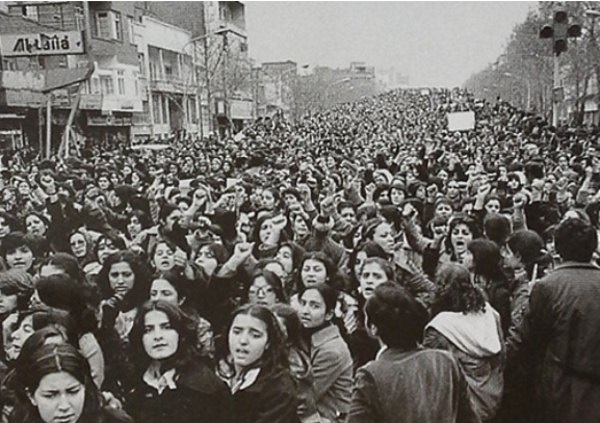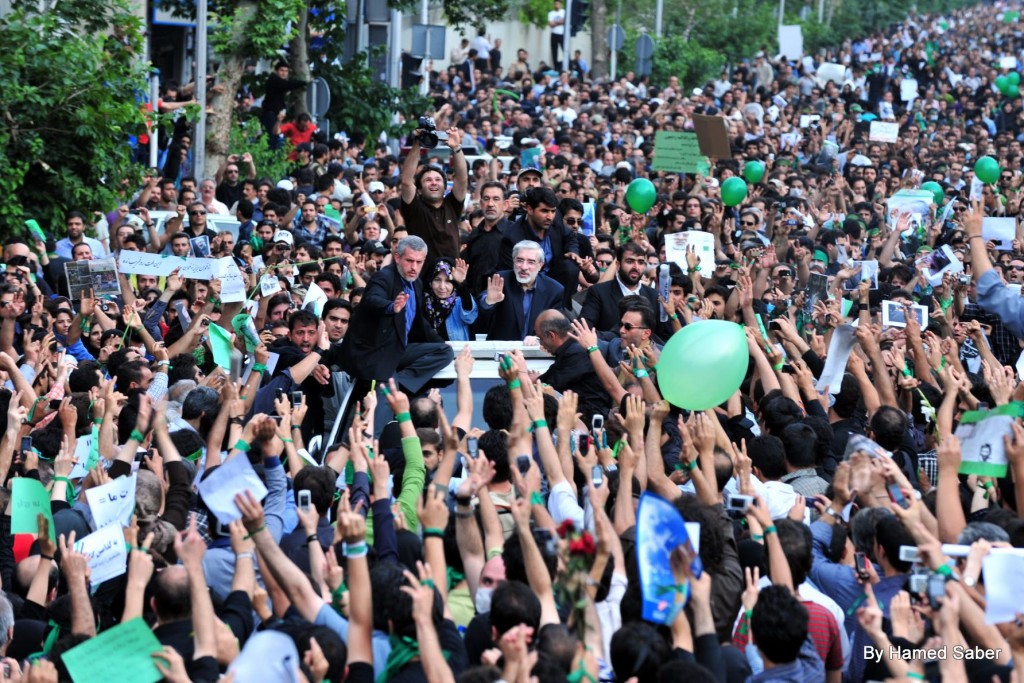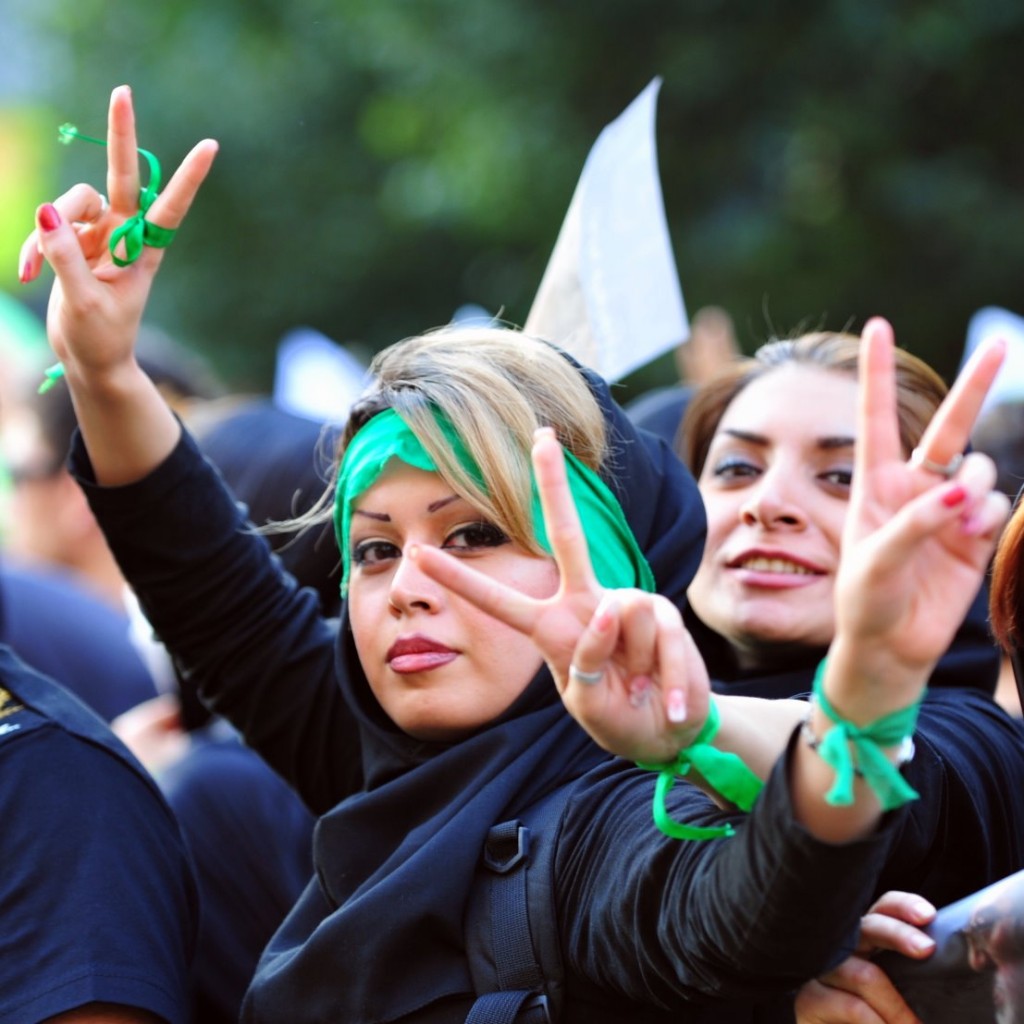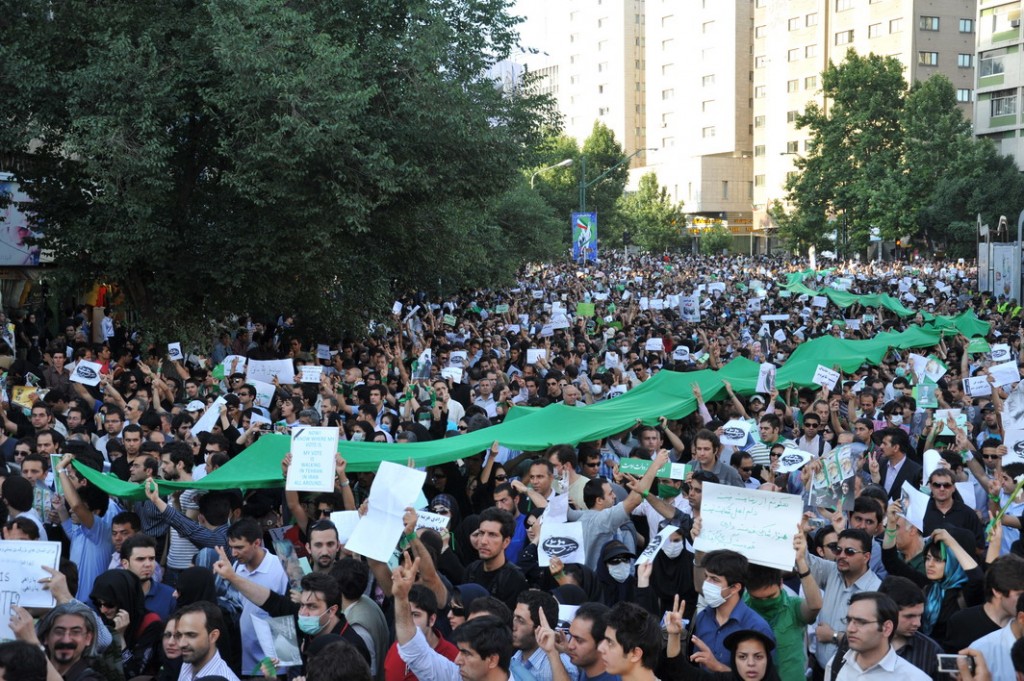In dealing with the Iranian nuclear threat, there are many options besides capitulation and war.
Sanctions and diplomacy have thus far failed to induce the Iranian regime to cease its nuclear weapons program. We shouldn’t be surprised by this. Top Iranian leaders, from Supreme Leader Ali Khamenei down, have repeatedly said that Iran will never abandon its “right to enrich uranium,” a process essential to building nuclear weapons. Indeed, the Iranians are now claiming that the Interim Agreement reached in Geneva by Iran, the U.S., and five other nations accepts this “right,” and the text seems to support their interpretation.
However you parse the agreement, there is no doubt that the U.S. has agreed to ease sanctions on Iran for at least the next six months. And even that time limit is more of a hopeful request than a hard and fast deadline. At the time of this writing, we are told that there are still some technical details to be hammered out, and the clock won’t start ticking until there is a final agreement. At the same time, Iran has already opened talks with American, European, Asian, and Turkish business concerns, especially the big oil companies, in anticipation of an end to the sanctions regime. Once those business connections take effect, there will be little enthusiasm for renewing the sanctions, whether after six months or six years.
So now what? Are we doomed to suffer endless negotiations, without any realistic hope of ending the Iranian nuclear program? Some American political leaders believe that if tough sanctions got us this far, tougher sanctions will get us farther. But the White House is having none of it. The president warns that such a move would undermine progress toward a final agreement and bring the West closer to war with Iran.
Are we, then, faced with the terrible choice once formulated by French President Nicolas Sarkozy: “Iran with the bomb, or bomb Iran”?
Not at all. Western strategy need not be limited to these two fearsome options. Instead, Western leaders should listen to the Washington Post editorialists who spelled out a third option two years ago: Change the Iranian regime. “By now,” the Post wrote in November 2011, “it should be obvious that only regime change will stop the Iranian nuclear program.”
For this third option to work, it must meet two conditions: First, it must be plausible. That is, there must be good reason to believe that the downfall of the regime—without waging a full-scale war against Iran—can be accomplished. And second, there must be good reason to believe that a new regime in Tehran will be better than the old. As my clear-eyed Russian grandmother used to remind me, things are never so bad that they can’t get worse. We certainly wouldn’t want that.
To understand the possibility of democratic change in Iran, one must remember that revolution is an Iranian national tradition. Over the last century, there have been no less than three political revolutions in Iran, the last of which created the Islamic Republic in 1979. There have also been two failed uprisings against the current regime: First in the summer of 2003, in response to which Secretary of State Colin Powell announced that the United States did not wish to get involved in a “family squabble”; and second in 2009, following the fraudulent elections that kept then-president Mahmoud Ahmadinejad in power for another four years. The 2009 demonstrations were larger than those that toppled the Shah in 1979, but once again the US stayed out of it, and the regime succeeded in putting down the uprising through a massive campaign of domestic repression.
Many of those who fought the regime in the streets four years ago are still in prison; most notably, three leaders of the opposition Green Movement: former prime minister and presidential candidate Mir Hossein Mousavi (who probably received more votes than Ahmadinejad), his firebrand feminist wife Zahra Rahnavard, and his ally, former parliamentary speaker Mehdi Karroubi. All three have been held in isolation for more than 1,040 days, and both men have been recently hospitalized.
Yet support for the opposition remains strong. When Iran’s Foreign Minister Muhammad Javad Zarif recently returned to Tehran from Geneva, hundreds of enthusiastic Iranians greeted him at the airport. But a substantial number of them were opposition supporters, as demonstrated by a YouTube video in which they can be heard calling Mousavi’s name—“Ya Hossein! Mir Hossein!”
Opposition activities aren’t limited to words. Although rarely reported outside Iran, attacks on refineries and pipelines are pandemic. In the small oil-rich province of Ahwaz, for example, where the Arab population has been subjected to unusual cruelty, there have been six pipeline attacks this year alone. At the same time, the northern gas pipelines to Turkey (where anti-regime Kurdish forces are active) have been frequently bombed.

Women protest against the mandatory wearing of hijab in the days following the Iranian Revolution, 1979. Photo credit: Soroush90gh / Wikimedia
Regime assets are also a target. Last March, the opposition attacked two Revolutionary Guard Corps installations. One was Zarin Dasht, where missile fuel and warheads are manufactured. The other was Natanz, a major uranium enrichment center. The resulting explosion forced the entire complex to shut down. While invariably blamed on Israel or the United States, some of these spectacular attacks are actually carried out by the Iranian opposition, and serious analysts believe they are also responsible for at least some recent assassinations of nuclear physicists.
The most convincing evidence of the opposition’s strength, however, comes from the regime itself. Put simply, the regime appears terrified of even the quietest expressions of dissent. Even small groups in public places are quickly broken up, lest they grow into full-scale demonstrations. At the beginning of the year, Khamenei’s representative to the Islamic Revolutionary Guards Corps, Ali Saeedi, described just how intense this fear has become. If Supreme Leader Ayatollah Ali Khamenei wanted to demonstrate the weakness of the opposition, he would have subjected the Mousavis and Karroubi to the same harsh treatment that has been meted out to many of their followers: Summary judgment by a Revolutionary Court, followed by execution. But Saeedi told the Iranian state news agency Fars that Khamenei cannot do this because Mousavi and Karroubi “have supporters and followers” as well as “a few [clerics] who continue to back elements within the sedition.”
The regime’s anxiety about the Green Movement led it to ban scores of candidates from running in the May parliamentary elections and deploy thousands of security forces to polling stations in order to prevent protests. Even the Supreme Leader shies away from public events. For the first time in more than twenty years, Khamenei failed to appear at Revolutionary Guards Day festivities in late June or at birthday celebrations for Imam Ali the following month. Indeed, when two popular Iranian artists— actor Iraj Ghaderi and musician Hassan Kassai—died in the summer of 2012, their funerals were held in the middle of the night, to make popular attendance as difficult as possible.

Opposition leader Mir Hossein Mouasvi being greeted by supporters, June 18, 2009. Photo: Hamed Saber / Wikimedia
So the regime’s answer to the question, “Can the Iranian regime be replaced?” appears to be an emphatic, “Yes, it can.”
Paradoxically, Western intelligence services are much more pessimistic about the chances for a successful Iranian revolution. They maintain that the Green Movement has been crushed and decapitated, and Khamenei and his henchmen are firmly in control. I’m not impressed by these conclusions, for two reasons: First, they said the same thing before the 2009 uprising, which took them by surprise. If they were so wrong then, why should we believe them now? And second, they said exactly the same thing about the Soviet Union and its satellites on the eve of their implosion. Time and again, we were told that there was no real opposition to the Soviets, that the KGB had crushed any attempt to challenge the regime, and that Gorbachev was firmly in control.
I think the Iranian regime has the more accurate reading of the situation.
Many of the revolutions resulting from the recent “Arab Spring” have been unhappy ones; so it is prudent to ask whether a new regime in Tehran would make things worse, not better: Worse for the region, worse for the United States, and worse for the Iranian people. Skeptics remind us that Mousavi was a loyal servant of the Ayatollah Khomeini, creator of the Islamic Republic itself. Why would we want such a man to rule Iran today?
First, there is plenty of reason to believe Mousavi has changed. Before he ran for president in 2009, he spent twenty years outside politics; and even as he repeatedly paid homage to Khomeini, his electoral campaign made is clear that he intended to undo the Ayatollah’s theocratic system. The clearest evidence of this comes from Mousavi himself. In the early months of his captivity, he wrote on his Facebook page that, if readers want to understand him, they should read two books: Gabriel Garcia Marquez’s News of a Kidnapping, and Stefan Zweig’s The Right to Heresy. Both quickly became best-sellers in Iran. The first book gave rise to a popular Facebook page called “News of a Kidnapping, the status of a president in captivity.” The second deals with the revolt against John Calvin led by 16th century cleric Sebastian Castellio. It is a call for religious toleration, and Castellio’s most famous line is “to burn a man alive does not defend a doctrine, but slays a man.”
One cannot read Zweig’s account of Castellio’s battle with the “totalitarian” Calvin without thinking of Mousavi’s challenge to Khamenei. Indeed, the book begins with a quotation from Montaigne that is clearly Mousavi’s motto: “The most valiant are often the most unfortunate. So there are triumphant losses more to be envied than victories.” Equally significant is the fact that there is no shortage of quotations extolling martyrs in Shi’ite Muslim texts—in fact, this is the central theme of the faith. Yet Mousavi sent anyone wishing to understand him and his movement to two Western books, one written by a Jew.

A bus burning in Tehran, the result of protests during the Green Revoultion, June 13, 2009. Photo: Shahram Sharif / Wikimedia
Second, Mousavi made it clear throughout his presidential campaign that he wants to bring Iran closer to the West. He promised, for example, to end Iranian support for international terrorism. This promise proved extremely popular. More than a year and a half later, in February 2011, demonstrators were decrying the regime’s support for the likes of Hamas and Hezbollah, carrying banners with slogans like “Don’t talk to us about the Palestinians, talk about us.”
The Green Movement also pledged to end many of the Islamic Republic’s oppressive policies. Although the group’s leaders pay lip service to restoring the values of the Islamic Revolution, anyone reading their specific proposals can see what’s really going on. During the 2009 campaign, Mousavi’s wife Zahra campaigned alongside him, saying, “I wear a veil and I believe all Iranian women should wear it.” But, she went on, “if there are any women who do not want to wear it, so be it.” It was a stark act of defiance against a deeply misogynistic regime. Mousavi has also promised toleration of religious dissenters, the release of all political prisoners, and a greater separation of religion and state. That is tantamount to dismantling the Islamic Republic.
President Obama has long been aware of the Green Movement and their intentions. During the 2009 uprising, the White House sent a short message to its leaders through an Iranian-American back channel in New York City. In November, with Iran still in turmoil, a lengthy reply arrived. The key line reads, “Religion, by the will of the Iranian people of today, has to be separated from the state in order to guarantee unity of Iran.” It’s hard to imagine a clearer rejection of the very basis of the Islamic Republic, or a more explicit statement of the desire to return to the Shi’ite tradition of limiting religion to the mosque while entrusting affairs of state to secular leaders.

Ayatollah Khomeini praying in France. Hassan Rouhani is behind him, second from left. Photo credit: Mojtaba Salimi / Wikimedia
The letter also warned President Obama about the true nature of the Iranian regime in no uncertain terms. It presents a snapshot of Iran under a theocratic tyranny. “It is as if the ‘Divine Right of Kings’ were to be reestablished in the West,” it states at one point. And, later on, “the regime is a brutal, apocalyptic, theocratic dictatorship that tries to survive by means of suppression of its own people, military force, theft of national resources, and economic stealth.” The letter says that, like all totalitarian governments, the regime cannot be reformed. But it also insists that the forces for change inside Iran are strong and well-led.
The Obama Administration never replied.
What about nuclear weapons? While the issue has not been specifically addressed, the Green Movement has repeatedly condemned the regime’s “adventurism” in foreign affairs. This, combined with the myriad indications that the Greens want better relations with the West very much, makes it a near certainty a free Iran led by the opposition would bring the country into compliance with the various UN resolutions that call for an end to uranium enrichment. In addition, the West would have far less to fear from a free Iran, whatever weapons it might possess, than from the current regime.
Those of us who worked to peacefully bring down the Soviet Empire have learned how little we really know about political revolution. During the Reagan administration, we were confident the Soviet system was doomed; but many of us, myself included, believed we had failed to bring about the revolution we hoped to see. We were surprised when the U.S.S.R. fell; and it was only later that we learned from dissidents in the former communist bloc that our work had indeed been decisive.
Those wondering how to bring down the Iranian regime today can learn several lessons from the last years of the Cold War. One of them is that many smart and sensible people will always tell you not to challenge an enemy regime. I was amazed at the opposition to our support for Soviet dissidents and refuseniks, as well as the Jackson-Vannick Amendment on behalf of Soviet Jewry. We were repeatedly warned that challenging Moscow would only make things worse for the people we wanted to help. And we were branded as crazy for believing it was possible to bring down the entire Soviet empire.
And yet, it’s gone.
Much the same is going on today in regard to Iran: The same warnings, the same insults, the same demands that we come to terms with an evil system and try to work out some kind of modus vivendi. Yet the Iranian regime is even more hollow and internally fractured than Gorbachev’s, and the relative size of the Iranian opposition dwarfs the forces willing to challenge the communists.
Khamenei knows that the greatest threat to his power comes from the Iranian people, who despise him and want to be free of his regime. They have long experience with self-government, they are the best-educated people in the Middle East this side of Tel Aviv and Jerusalem, and they are willing to fight. We should help them.
As the Greens wrote to Obama in 2009, “It is up to the countries of the free world to make up their mind. Will they… push every decision to the future until it is too late, or will they reward the brave people of Iran and simultaneously advance Western interests and world peace?”
To date, we have tried to come to terms with the regime and utterly failed to help the Iranian people; even though it wouldn’t be very difficult or expensive to do so. We should maintain sanctions, which send an important political message to the Iranian people, and we should openly support them, call for the release of political prisoners, broadcast accurate news about the Islamic Republic to them, work with the international trade union movement to support Iranian workers (tens of thousands of whom are not being paid on time), and relentlessly expose the crushing repression to which they are subjected and which has not improved under the new President, Hassan Rouhani. But above all, they should hear from us. To my knowledge, no Western government has contacted the Iranian opposition inside the country since shortly after the 2009 uprising. That must change.
It’s the right thing to do, and it’s strategically sound. If we don’t work for revolutionary change inside Iran, we condemn ourselves to the Sarkozy option: Which will it be, Iran with the bomb or bomb Iran?
![]()
Banner Photo: Hamed Saber / Wikimedia







